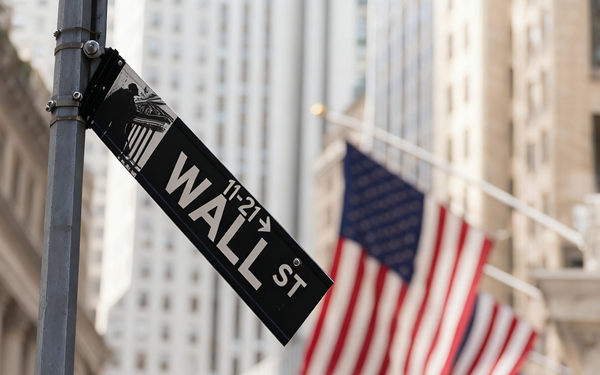Despite the S&P 500 posting solid gains this year, growing evidence suggests that the U.S. equity rally may be built on shaky foundations. Several analysts have highlighted troubling economic signals that contrast with the prevailing bullish sentiment on Wall Street. n nTariff policies remain a significant concern. Experts agree that higher tariffs are likely to harm trade, corporate earnings, and overall economic expansion. Michelle Gibley from Charles Schwab emphasized that while the effects may be delayed, they are not avoided. n nRecession probabilities are rising. UBS estimates a 93% chance of a U.S. economic downturn, while JPMorgan Chase and Goldman Sachs project 40% and 30%, respectively. Even analysts who don’t foresee a contraction warn of stagflation—sluggish output paired with rising prices. n nValuation metrics are also raising red flags. The Shiller CAPE ratio for the S&P 500 is the third-highest in history, and the Buffett Indicator—measuring total market capitalization against GDP—has hit a record 213%. This surpasses the 200% level Warren Buffett once described as “playing with fire.” n nA notable gap exists between market ratings and underlying performance. Of S&P 500 companies, 405 have consensus “buy” or higher recommendations, while only four are uniformly rated “sell.” More strikingly, 21 stocks trading above their 12-month price targets still carry “buy” labels. Additionally, 22 of 40 firms projected to have negative earnings growth over the next five years retain positive ratings, as do 39 of 64 companies expected to grow earnings by less than 5% annually—below the yield on risk-free Treasury securities. n nIn this environment, Warren Buffett’s investment philosophy offers guidance. The Berkshire Hathaway leader avoids following Wall Street consensus, instead focusing on company fundamentals, long-term prospects, and fair valuations. His firm’s large cash holdings reflect a cautious stance that may serve as a model for individual investors navigating current market risks. n nBuffett isn’t exiting equities. He maintains a diversified portfolio of long-held stocks, confident in their ability to generate returns over time despite short-term turbulence. n nGiven the widening gap between analyst recommendations and economic realities, independent analysis may prove more valuable than following the crowd. Buffett’s disciplined approach underscores the importance of prudence when market sentiment diverges from fundamental indicators. n— news from NAI500
— News Original —
A Dangerous Divorce: Wall Street’s Buy Ratings Clash With Ominous Economic Warnings
Despite solid gains in the S&P 500 this year, mounting evidence suggests the U.S. stock market rally may be on more fragile ground than Wall Street acknowledges. Multiple analysts have pointed to concerning signs that contrast sharply with the pervasive optimism in the market. n nThe economic impact of tariff policies remains a key concern. Analysts widely agree that tariffs will negatively affect trade, equities, and economic growth. As Michelle Gibley, an analyst at Charles Schwab, noted, the economic impact of higher tariffs is likely delayed, not eliminated. n nRecession risks are also escalating. UBS recently estimated a 93% probability of a U.S. economic recession, while JPMorgan Chase and Goldman Sachs placed the odds at 40% and 30%, respectively. Some analysts who do not forecast a recession warn instead of stagflation—a combination of stagnant growth and rising inflation. n nMarket valuation metrics are flashing warning signs. The S&P 500 Shiller CAPE ratio stands at its third-highest level in history, and the Buffett Indicator (the ratio of total stock market capitalization to U.S. GDP) has reached a record 213%, far exceeding the 200% threshold that Warren Buffett once called “playing with fire.” n nWhat’s puzzling is the clear disconnect between Wall Street’s recommendations and underlying fundamentals. Within the S&P 500, 405 stocks carry consensus “buy” or higher ratings, while only four have unanimous “sell” recommendations. Even more strikingly, among 44 stocks whose prices already exceed their 12-month target prices, 21 are still rated “buy.” Similarly, 22 of 40 companies with projected negative earnings growth over the next five years maintain “buy” ratings, and 39 of 64 stocks with expected annual earnings growth below 5%—lower than the current 4%+ yield on risk-free Treasury bills—also retain “buy” recommendations. n nIn light of these contradictions, Warren Buffett’s investment approach offers a valuable model. The legendary investor disregards Wall Street opinions, instead conducting independent research into business fundamentals, growth prospects, and valuations. Berkshire Hathaway has also built a substantial cash reserve—a strategy that may serve as a prudent example for ordinary investors given the current market risks. n nNotably, Buffett is not panicking. He holds dozens of stocks, many of which he intends to keep regardless of market fluctuations, believing that a well-diversified portfolio will yield positive returns over the long term. n nWhether or not the market faces imminent decline, Buffett’s cautious strategy remains a wise reference for investors. When Wall Street’s recommendations increasingly diverge from key risk indicators, independent thinking may prove far more valuable than blind conformity.
